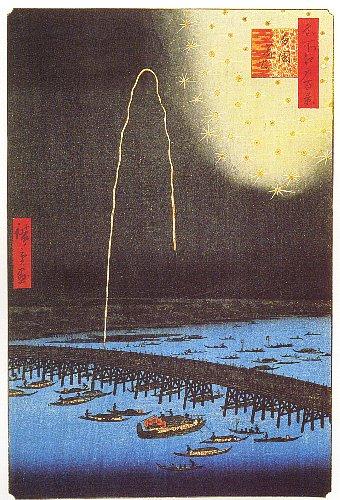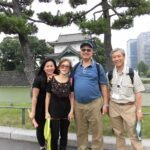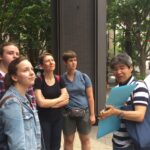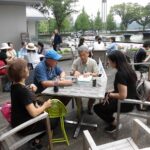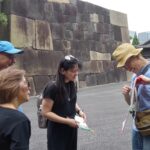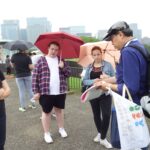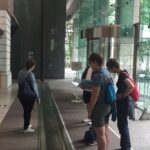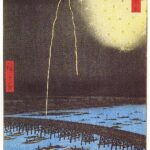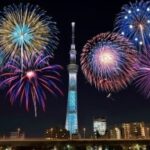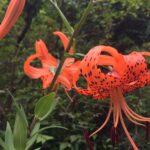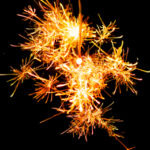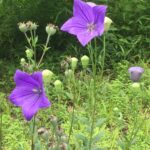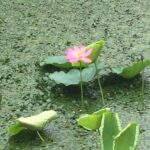Thank you for joining our tour to the East garden of the Imperial Palace on July 13th.
We welcomed worldwide 12 guests from Philippine, UK, France, Austria, Germany, Netherlands and Finland. Divided into 3 groups with a few guides respectively. The weather was not so bad for the rainy season. Cloudy and little rain in the last minutes of the tour. 27℃ (81℉), gentle wind but very humid. We really appreciate all guest for sharing your precious time together and enjoyed our tour with the guests.
Our tour explores Japanese modernization after middle of 19th and goes into the former Edo castle area (now the east gardens of Imperial palace). We had a pleasant conversation with our guest today, too. Sometimes a question from a guest brings us awareness. I love such exchanges very much.
In the gardens, the preparation of the Great Thanks Giving ceremony by new Emperor, so called “DAIJOSAI” in Japanese, on Nov. 14th and 15th, is on going. A restricted access area is beginning to emerge in the preparation. However, don’t worry, we carefully select the places where we can enter in and strive to provide a satisfying tour.
In Tokyo, the rainy season still continues, but it is expected that the rainy season will end in late July. When the rainy season is over, it will be summer at a stretch. This late July to August is also the fireworks season in Japan. Many large and small fireworks displays are held throughout the country. Even if it counts only the main thing, it will go up to 11 places in July and 28 places in August. For instance, in Tokyo metropolitan area,
July 20th (Sat) Adachi Fireworks Festival
July 23rd (Tue) Katsushika Noryo Fireworks Festival
July 27th (Sat) Sumida River Fireworks Festival
Aug 1st (Thr) Koto Fireworks Festival
Aug 3rd (Sat) Edogawa Fireworks Festival, Itabashi Fireworks Festival
Aug 10th (Sat) Jingugaien Fireworks Festival
It is said that, in 1613, Ieyasu Tokugawa, the founder of the Tokugawa Shogunate, saw fireworks as the entertainment firstly in Japan. After that, Yoshimune Tokugawa, the 8th Shogun in 1733, was said to have launched the fireworks in the Sumida River for the repose of the dead in the famine and cholera that were prevalent at that time, the roots of the “Sumida River Fireworks Festival” . At the Sumida River Fireworks Festival, 950,000 people watch 20,000 fireworks today.
In overseas, fireworks are often launched on special days such as historic anniversary and New Year holidays, but in Japan, many fireworks are launched at this season with the meaning of calmness and coolness. In addition, Japanese fireworks are characterized by being spherical, spreading concentrically, and changing the color of stars. Of course you can also see fireworks of other shapes in the fireworks display.
Hand-held fireworks also have a different flavor from launch style fireworks. The ones I like are sparklers. When the fire is turned on, it changes with the flow of “thunder”, “peony”, “pine leaves”, “willows” and “scattered chrysanthemums”, and finally a red ball falls to the ground. I think it’s a fireworks with an ephemeral but dignified beauty.
Fireworks are called “HANABI” in Japanese, “HANA” is a flower, “BI” is fire, so literally “Fire of Flower”. It is a beautiful flower that colors Japanese summer nights.
In the daytime, you can visit Japan’s history and features on our walking tours in “The east garden of Imperial palace”, “Meiji shrine and Harajuku”, “Asakusa” and “Ueno”, and watch the large and small colorful flowers at night.
(Posted by Toyo)

